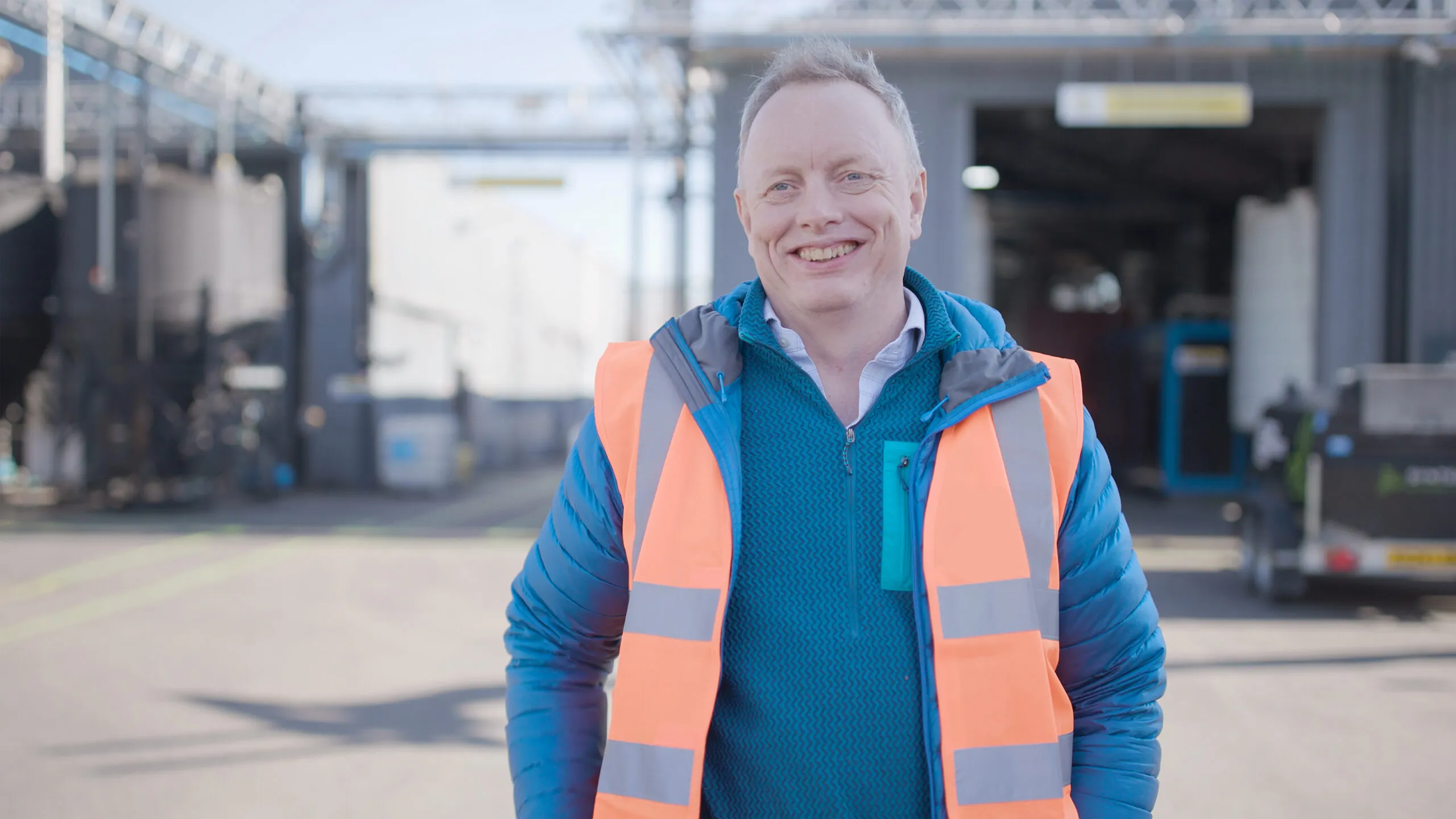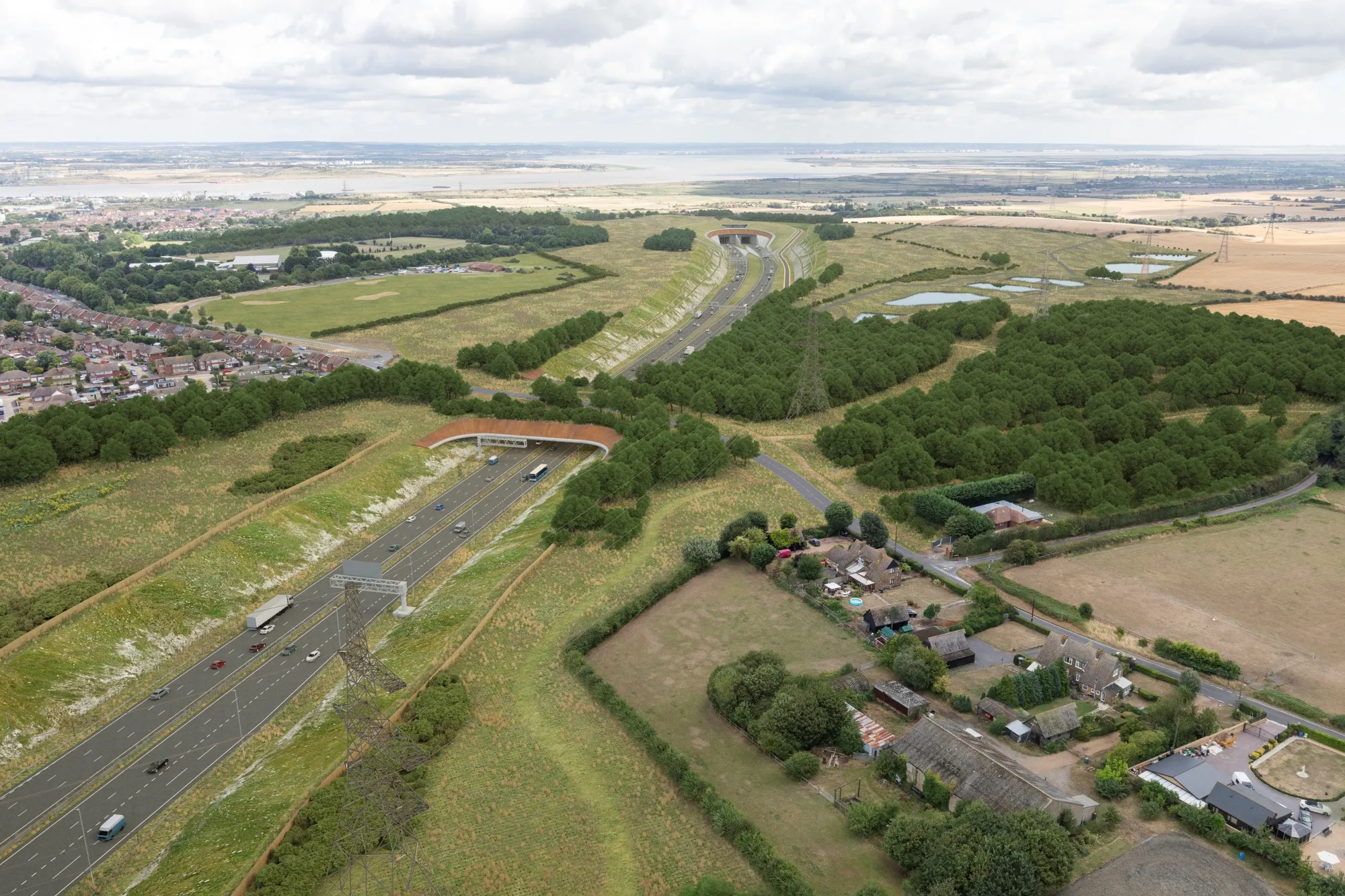Lower Thames Crossing, the UK’s largest road project, underwent a subtle transition in July. For the first time, more hours were spent on site than in the office. In fact, the shift to finally being an on-site project – after extensive development consent order (DCO) delays – came sooner than might have been expected, as executive director Matt Palmer explains.

Matt Palmer is executive director at Lower Thames Crossing
“We had a small celebration about the DCO going through, but the thing we’re most proud of is the lack of a judicial review. The fact that we’re the first major piece of infrastructure in the UK, from memory, since about 2014 or 2015 to not get judicially reviewed is a real validation of the work and the effort we put in.”
Given the time it might have taken to go through a judicial review, the impact for the project is big. Palmer is clear that the review was avoided by listening to local stakeholders and putting a strong emphasis on the environmental as well as community impact. Indeed, on carbon, he cannot praise the project’s supply chain highly enough.
“One of the most compelling reasons to set a very aggressive carbon ambition was to get the right sorts of people onto the project because we’re competing with global schemes. There are a lot of big programmes out there. The market’s very hot and we’re age-old technology – roads are things we’ve been doing for thousands of years.
“People can go and do nuclear power projects, they can do grid upgrades. So, we recognised that strategically we needed to do the right thing by the climate, not only because it is the right thing to do, but because doing so would attract people and do the right thing by them. It gives them something they can be proud to deliver.”
We recognised that strategically we needed to do the right thing by the climate, not only because it is the right thing to do, but because doing so would attract people and do the right thing by them. And it gives them something they can be proud to deliver
This focus on carbon has already pointed to some remarkable opportunities. Some of these go well beyond Lower Thames Crossing’s original expectations and reflect the decision to set the agenda without specifying a particular path to achieving it.
“There were about nine competing entities for three delivery contracts and the winners of those contracts really listened and engaged at the chief executive level. They saw that if they can deliver lower carbon for us, many of the ways they do it would result in lower cost, and they saw this strategically. If they can deliver at much lower carbon and cost on LTC, they know that positions them to win more projects as the market keeps going further in that direction.
“That made it a real win-win for us. When we started, we thought we’d go for a 30% reduction, but we ended up with a 50% reduction in carbon against the baseline, for free. The 30% figure was something we started with because if we looked at what had been done on HS2, for example, and scaled it across our project, the result would be a 30% reduction. But what actually happened was that each of the supply chain partners did something slightly different, challenging a number of other assumptions.
“The totemic example of that is tunnel boring, where the contractor said, we could do this with just one TBM rather than two. That reduced carbon, temporary works and more. So, suddenly, you see a big drop in carbon and cost.”
LTC has gained attention internationally because of that, with projects from around the world looking at the proposed delivery methods that could offer similar savings in carbon on their projects. But Palmer is not entirely satisfied with a 50% reduction.
“We’ve been working on how far we can go, given that we’re in the mid-2020s now. And time matters. Technologies are coming on stream, so when exactly you land makes a big difference. This is a bit of an art rather than science, but we think that as the project progresses, it could be possible to take out somewhere around 70 to 75% of carbon from a 2020 baseline because of how the emerging technologies may impact on our three main emitters – concrete, steel and diesel.”

While seeking to mitigate some impacts of a project is common, Lower Thames Crossing is putting a big focus on maximising positive impacts on communities
Local impact and scrutiny
That reduction in carbon is before any consideration is given to offsetting, and it has not all been driven by the main contractors. Along with the aim to reduce carbon across the programme, LTC has a strategy to employ suppliers and materials locally where possible.
One of those is set to provide a biofuel alternative to diesel based on treated cooking oil sourced in the UK. A project like LTC can have a big impact on companies like that, as well as on local populations where training by LTC can set people up for careers.
“We have a very extensive community outreach, and that works in two ways. One is about communication and information, but the other is about enabling the local population to really get involved. We’re about to open a skills hub in Gravesham, to try to increase the population of plant operatives in the area so that there are local people to work on site rather than people being shipped in from all over the country. And we’re hoping to announce one soon north of the river, in Essex.”
The skills agenda is something Palmer sees as a real opportunity to make a difference across the project, and he is keen to take concrete steps to have his own project’s feet held to the fire on this. Days after we spoke, that saw the announcement of the Lower Thames Crossing skills taskforce, to be chaired by former education secretary Lord Blunkett.
“This is a new forum to hold us to account on our commitments and drive us to improve. We have Lord Blunkett to chair it, and we’ve got local MPs and the leaders of local councils on that group, so we’ve got strong voices on that taskforce who will stand up to us if we don’t deliver.
“There’s a continual narrative on projects about making sure that you minimise the impact on an area, but what people really want us to do is to maximise the positive impact and keep them informed about things like disruption on the roads.”
Palmer is excited to have Lord Blunkett on board and believes he will use the taskforce to demand that LTC declares numbers. Importantly, he feels Lord Blunkett will refuse to accept delays to publishing if LTC were to claim the numbers weren’t yet ready.
“That’s a healthy challenge because it’s very easy to decide internally that we’re not ready or the narrative isn’t quite right yet, but for me it’s about being local and transparent. If we can be transparent and even own up to our missteps then that will build trust.”
Trust matters because of the nature and number of stakeholders involved. With a project that impacts several local authorities, some of which have been sceptical at times and even opposed to the plans, LTC is acutely aware of the need to keep those stakeholders on side.
“If you look back in 2020 when I arrived, we had three local authorities – three of our planning authorities – opposing us. And the two county councils were neutral at best. One failed to even comment on us. So, we had a predominantly negative voice against us.
“If you look at the picture now, we’ve got both county councils supporting us. We do still have one local authority kind of opposing but the rest are now vocally supportive. That doesn’t make them passive. They are really focused on extracting value from our project now. They can put their focus on how to ensure environmental protections, and jobs and skills creation. That makes them strong partners in delivering local benefits.
“And that’s why we started working on the skills hubs years before we actually need to start employing people with those skills on site. We wanted to start getting skills into the local area, which means that local people will be able to work on our project in the coming years, so it’s something to support.”
Like what you’ve read? To receive New Civil Engineer’s daily and weekly newsletters click here.



